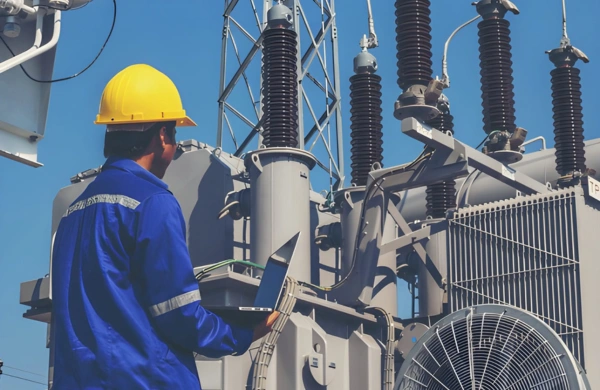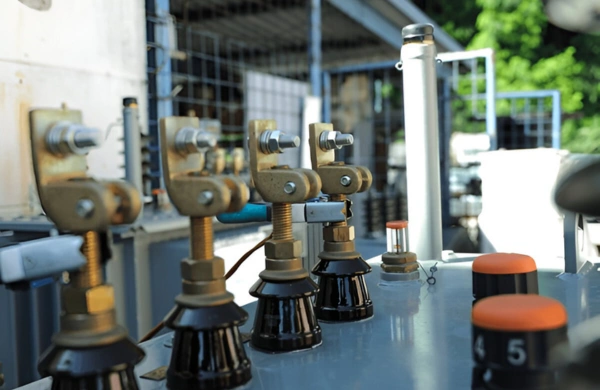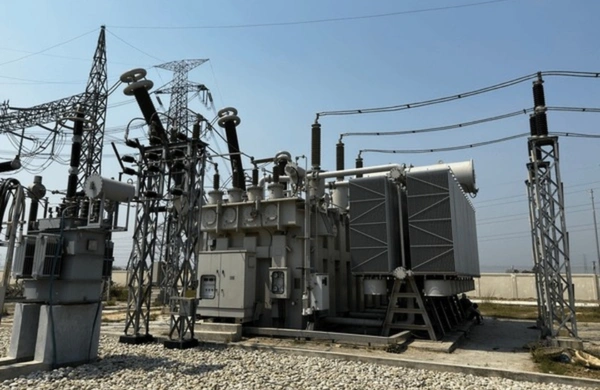Introduction
As electric utilities modernize their infrastructure to support smart grids, real-time transformer monitoring systems have become an essential part of asset management and operational reliability. These systems continuously track key performance indicators such as temperature, load, oil quality, partial discharge, and vibration—helping utilities detect faults early and prevent costly outages.
Transformers are the backbone of power networks, yet more than half of unplanned outages in distribution and transmission systems are caused by insulation failures, overheating, or undetected electrical stress. By integrating digital monitoring with traditional transformer design, utilities can transition from reactive maintenance to predictive, data-driven asset management.
Know About Real-Time Transformer Monitoring Systems
for Utilities
This article explores how real-time monitoring works, the critical parameters it tracks, and how Zetwerk supports North American utilities and OEMs with precision-engineered transformers equipped for smart condition monitoring and long-term reliability.
1. The Need for Real-Time Transformer Monitoring
Transformers in substations, renewable energy systems, and industrial facilities are expected to operate continuously under fluctuating load and environmental conditions. Traditional time-based inspections often fail to identify emerging issues such as insulation degradation or thermal stress.
Key challenges utilities face include:
- Overloading due to renewable power variability.
- Oil and insulation aging that leads to dielectric breakdown.
- Internal faults undetectable by conventional testing.
- Rising maintenance costs and reduced availability of skilled field technicians.
Real-time power monitoring systems address these challenges by providing continuous, high-resolution data that enables predictive diagnostics and condition-based maintenance, significantly improving transformer uptime and life expectancy.
2. Core Components of a Transformer Monitoring System
A modern transformer monitoring system integrates hardware sensors, communication modules, and software analytics to form a unified digital interface for asset management.
a. Sensor Network
Multiple sensors are installed on or within the transformer to capture real-time operating data:
- Temperature Sensors: Measure oil, winding, and ambient temperatures.
- Dissolved Gas Analysis (DGA) Sensors: Detect gases like hydrogen, methane, and acetylene formed during insulation faults.
- Moisture-in-Oil Sensors: Monitor dielectric fluid quality and detect contamination.
- Bushing Monitors: Measure leakage current and detect insulation deterioration.
- Vibration and Acoustic Sensors: Identify mechanical or partial discharge anomalies.
b. Data Acquisition Unit (DAU)
Collects and digitizes sensor signals, transmitting data to local or cloud-based servers.
c. Communication Interface
Supports Modbus, IEC 61850, or DNP3 protocols for seamless integration into utility SCADA (Supervisory Control and Data Acquisition) systems.
d. Software Platform / Analytics Dashboard
Processes sensor data using predictive algorithms to assess asset health, generate alerts, and suggest maintenance actions.
Zetwerk’s transformers are designed with integration-ready monitoring ports and smart sensor interfaces, enabling utilities to deploy these systems with minimal retrofitting.
3. Parameters Tracked for Transformer Health Assessment
Transformer monitoring systems measure key parameters that directly reflect operational condition and potential failure modes.
| Parameter | Monitoring Purpose | Typical Action Trigger |
| Oil Temperature | Detect overloading, cooling failure | >90°C alarm |
| Winding Hot Spot | Prevent insulation breakdown | Exceeds thermal class limit |
| Dissolved Gas Levels | Identify arcing, partial discharge | Hydrogen >500 ppm |
| Moisture Content | Assess insulation degradation | >30 ppm water |
| Load Current | Monitor overload trends | >120% of rated |
| Vibration / Acoustic Signals | Detect mechanical looseness | Deviation >10% baseline |
| Bushing Leakage Current | Identify early dielectric failure | >5 mA change |
The real value of real-time monitoring lies in trend analysis—tracking gradual deviations rather than waiting for alarm thresholds to trip.
4. Benefits of Real-Time Transformer Monitoring for Utilities
a. Predictive Maintenance
Continuous data enables utilities to schedule maintenance before a failure occurs, avoiding unplanned downtime and reducing costs by up to 40%.
b. Extended Transformer Life
Monitoring thermal stress and moisture prevents premature insulation aging, extending equipment lifespan by several years.
c. Enhanced Grid Reliability
Fault detection in real time allows immediate load redistribution and grid reconfiguration, minimizing service interruptions.
d. Optimized Asset Utilization
Load profiling ensures transformers are operated closer to their rated capacity without exceeding safe limits.
e. Regulatory Compliance and Safety
Digital logs and diagnostics ensure adherence to IEEE and NERC operational reliability standards for grid equipment.
With Zetwerk’s manufacturing expertise, transformers can be pre-configured for integration with monitoring systems, supporting utilities in building digital-ready substations.
5. Integration with Smart Grid and SCADA Systems
For modern utilities, the ability to integrate transformer data with grid management systems is essential.
- Edge Processing: Local DAUs process data and send only critical parameters to central systems, reducing communication load.
- Cloud Analytics: Enables cross-facility comparison and AI-driven fault prediction.
- Digital Twins: Utilities can simulate transformer behavior under variable loads and environmental conditions for planning.
Zetwerk supports transformer designs with modular sensor ports, digital connectors, and embedded gateways to simplify SCADA and IoT integration.
6. Compliance and Standards for Transformer Monitoring
Monitoring systems must adhere to international standards governing data acquisition, communication, and reliability.
Key Standards Include:
- IEEE C57.104: Guide for dissolved gas analysis of mineral oil.
- IEC 60076-7: Transformer loading guide based on temperature and aging.
- IEC 61850: Communication protocols for digital substations.
- IEEE C57.143: Guide for monitoring power transformers.
- NERC PRC Standards: Define reliability criteria for protective monitoring equipment.
Zetwerk’s smart transformer solutions are designed and tested in compliance with these standards to ensure interoperability and long-term performance for North American utility grids.
7. Leading Transformer Monitoring System Providers
1. Zetwerk Manufacturing USA
Delivers transformers equipped with integration-ready monitoring interfaces and sensors for utilities and industrial applications. Zetwerk’s design flexibility allows OEMs and utilities to specify data protocols, sensor types, and connectivity standards—ensuring faster implementation of smart grid strategies.
2. Siemens Energy
Offers integrated transformer monitoring solutions with advanced DGA sensors and analytics software.
3. GE Grid Solutions
Provides real-time monitoring and digital twin-based predictive maintenance systems.
4. ABB Ability™
Develops IoT-enabled monitoring platforms with built-in analytics for high-voltage transformer fleets.
5. Dynamic Ratings (USA)
Specializes in modular transformer monitoring systems for utilities, focusing on retrofittable installations.
8. Technological Advancements Driving the Future
Transformer monitoring is rapidly evolving through digital transformation, AI, and sensor miniaturization. Emerging trends include:
- AI-Based Predictive Algorithms: Enable automated fault classification and remaining-life prediction.
- Fiber Optic Temperature Sensors: Provide accurate winding temperature data.
- Cloud-Connected Dashboards: Real-time visualization of transformer health across the grid.
- Cybersecurity-Enhanced Data Networks: Secure communication for critical grid assets.
- Self-Powered Sensors: Energy harvesting from magnetic fields eliminates external power needs.
Zetwerk integrates sensor-ready designs and modular communication interfaces, ensuring that its transformers are future-proof for utility digitalization initiatives.
Conclusion
Real-time transformer monitoring has become a strategic necessity for utilities striving to enhance reliability, efficiency, and sustainability. These systems transform transformers from passive assets into intelligent, self-reporting components of a digital grid—helping utilities prevent faults, reduce maintenance costs, and extend asset life.
Zetwerk manufactures precision-engineered transformers ready for integration with real-time monitoring systems. Combining advanced materials, robust insulation systems, and digital connectivity, Zetwerk ensures each transformer delivers superior electrical performance, long service life, and seamless compatibility with utility SCADA infrastructure across North America.




FAQs
a. It’s a network of sensors and analytics software that continuously monitors transformer condition to predict faults and optimize performance.
a. Oil temperature, dissolved gas levels, load current, moisture, vibration, and bushing condition.
a. It enables predictive maintenance, identifying early warning signs before failures occur.
a. Yes. Zetwerk provides transformers equipped with sensor ports and communication interfaces for SCADA integration.
a. Yes. They adhere to IEC 61850 and IEEE standards for interoperability in modern and legacy networks.








